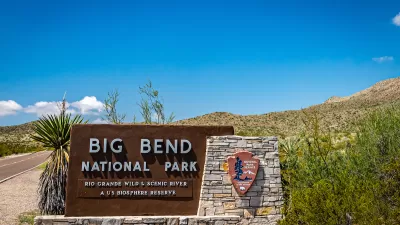During Australia's 12-year drought, cities like Brisbane cut water usage per-person-per-day by more than half. Andy Lipkis, the founder and president of TreePeople, believes Los Angeles can follow this example.
In the face of changing weather patterns due to climate change and with fewer trees today to capture, clean, and store rainwater, Lipkis argues that city residents must themselves collect as much of the resource as possible. Speaking at the USC Center for Sustainability’s Spring Forum titled "Envisioning Drought Resilient Cities," he shares the unprecedented success Australia experienced after its citizens installed rainwater-capture cisterns on their own homes. Relying on supplies in their backyards, he explains, changed Australians' relationship to water and encouraged them to conserve--along with harvesting drops that would otherwise be lost as runoff.
Predictions point to "hotter hots, wetter wets, and drier dries," leaving Southern California to prepare for increasingly extreme conditions. Lipkis sees this challenge as an opportunity to re-integrate water management, moving away from a system controlled by "bureaucracies that never talked to each other again like the tree talked to itself." As local agencies begin to work together on rainwater-capture solutions, Lipkis is hopeful that Los Angeles can follow Australia in dramatically decreasing demand.
He explains: "The City of LA throws away at least 3.8 billion gallons per inch of rainfall as runoff. Last month, when it rained 4 inches in one week during that storm, we threw away 13 billion gallons of water. We threw away 3.5 thousand gallons per person, for every one of the 4 million residents of the city. In the driest year in recorded history, we had a lot of water that we could have captured if we built a system like this... It’s going to take leadership, and leadership is emerging."
FULL STORY: Australia’s Rainwater Cisterns Inspire TreePeople’s Lipkis

Planetizen Federal Action Tracker
A weekly monitor of how Trump’s orders and actions are impacting planners and planning in America.

Restaurant Patios Were a Pandemic Win — Why Were They so Hard to Keep?
Social distancing requirements and changes in travel patterns prompted cities to pilot new uses for street and sidewalk space. Then it got complicated.

Maui's Vacation Rental Debate Turns Ugly
Verbal attacks, misinformation campaigns and fistfights plague a high-stakes debate to convert thousands of vacation rentals into long-term housing.

In California Battle of Housing vs. Environment, Housing Just Won
A new state law significantly limits the power of CEQA, an environmental review law that served as a powerful tool for blocking new development.

Boulder Eliminates Parking Minimums Citywide
Officials estimate the cost of building a single underground parking space at up to $100,000.

Orange County, Florida Adopts Largest US “Sprawl Repair” Code
The ‘Orange Code’ seeks to rectify decades of sprawl-inducing, car-oriented development.
Urban Design for Planners 1: Software Tools
This six-course series explores essential urban design concepts using open source software and equips planners with the tools they need to participate fully in the urban design process.
Planning for Universal Design
Learn the tools for implementing Universal Design in planning regulations.
Heyer Gruel & Associates PA
JM Goldson LLC
Custer County Colorado
City of Camden Redevelopment Agency
City of Astoria
Transportation Research & Education Center (TREC) at Portland State University
Jefferson Parish Government
Camden Redevelopment Agency
City of Claremont



























